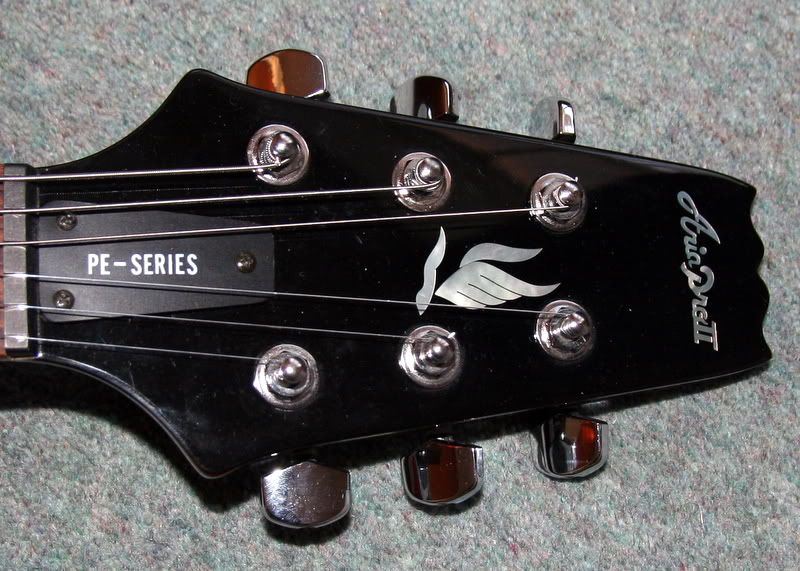Aria Made In Japan Serial Numbers

The History of Aria.  It was as early as the late 50’s when Arai started to import Fender guitars and amplifiers from the US, although at that time the Japanese market was not quite ready for the electric guitar! With the advent of rock n’ roll demand for electric guitars took-off. Arai released its first ARIA brand electric guitars in 1963.
It was as early as the late 50’s when Arai started to import Fender guitars and amplifiers from the US, although at that time the Japanese market was not quite ready for the electric guitar! With the advent of rock n’ roll demand for electric guitars took-off. Arai released its first ARIA brand electric guitars in 1963.
Models Specifications and Info * About serial numbers on Shiro Arai Co./Matsumoku Guitars * Serial numbers for these guitars is not a perfect science, but in nearly all cases after Matsumoku's involvement they can be trusted to indicate what year the guitar was produced. Shiro Arai Co. Most guitars produced by Arai such as the Aria Diamonds (not to be confused with the Aria Pro II Diamonds), Lyle, Conrad, Maxi-Tone, Japanese Epiphone, Univox, and the other pre-1976 guitars often had serial numbers usually on the neck plate (I imagine so dealers could track warranty, etc.). Unfortunately the number was arbitrary and had little to do with when the guitar was produced.
After Arai joined forces with Matsumoku, the serial numbers began to have some bearing on the guitar's production year and rank in production sequence. Serial numbers on these guitars were arbitrary numbers and did not indicate date of manufacture. When dating these guitars only ballpark ranges is possible. One tip is the type of pickups. Ecs ata 100 driver free download free. Single coil trapezoid face = mid to late 1960s, P-90 sized single and dual coil pickups = early 1970s, normal humbuckers and more strat like singles = early to mid 1970s. Guitars produced by Matsumoku Nearly all guitars produced by Matsumoku (beginning sometime late 1976 or early 1977) bore serial numbers indicating the year and possibly production sequence.
A small number of guitars produced had serials preceeded by a letter, but as to what the letter inidicated is yet a mystery and one can only guess without concrete evidence. I have seen both 6 and 7 digit serial numbers (excluding the letter if it is present).This new serialization covered Aria, Aria Pro II, Vantage, Westbury, most Westones, Japanese Washburns, some Electras, and the Skylark as well as others. As far as I know, the Korean version of these labels bear 8 or more digit serials and sometimes the production locaciton code (letter indicating Korea, Phillipines, Indonesia, etc.) which does not concern us here.
The first digit (and upon rare occasion the first two) indicated the year. There is an inherent flaw with this single-digit method as the single digit year indicator will re-cycle after a decade! Attention must be paid to when the particular model was available and apply that to the first digit of the serial, excluding the letter if present. A bit of cross referencing is required. For example, my first Cardinal CS-350 has the serial 2010237 which indicates both by the first digit and the duration of the Cardinal CS-350 run it is a 1982 (and I know it is, I bought it then!). In rare instances the first two digits would indicate the year, in which case we can safely assume that my Cardinal is not a 1920!
Had it been the two-digit version it would have begun with 82XXXXX rather than 20XXXXX, which would also indicate 1982. Spotting and identifying early Korean models after production shifted to Korea.
Early Korean models adopted similar looking serial numbers but were not indicative of the year manufacturered. Many early Koreans appeared to be nearly identical to the Japanese models with one important thing missing, at least on models with bolt necks and neckplates: 'Made In Japan' or 'Product of Matsumoku'. Without this, it is not an earlier Japanese model. Other tip-offs to later Korean heritage are bridges with squared-off ends, 3rd fret scarf joint in the neck, Schaller style tuners on models previously equipped with keystone style tuners, smaller potentiometers, and Quck-hook tailpieces with standard stop-bar stud spacing among others.